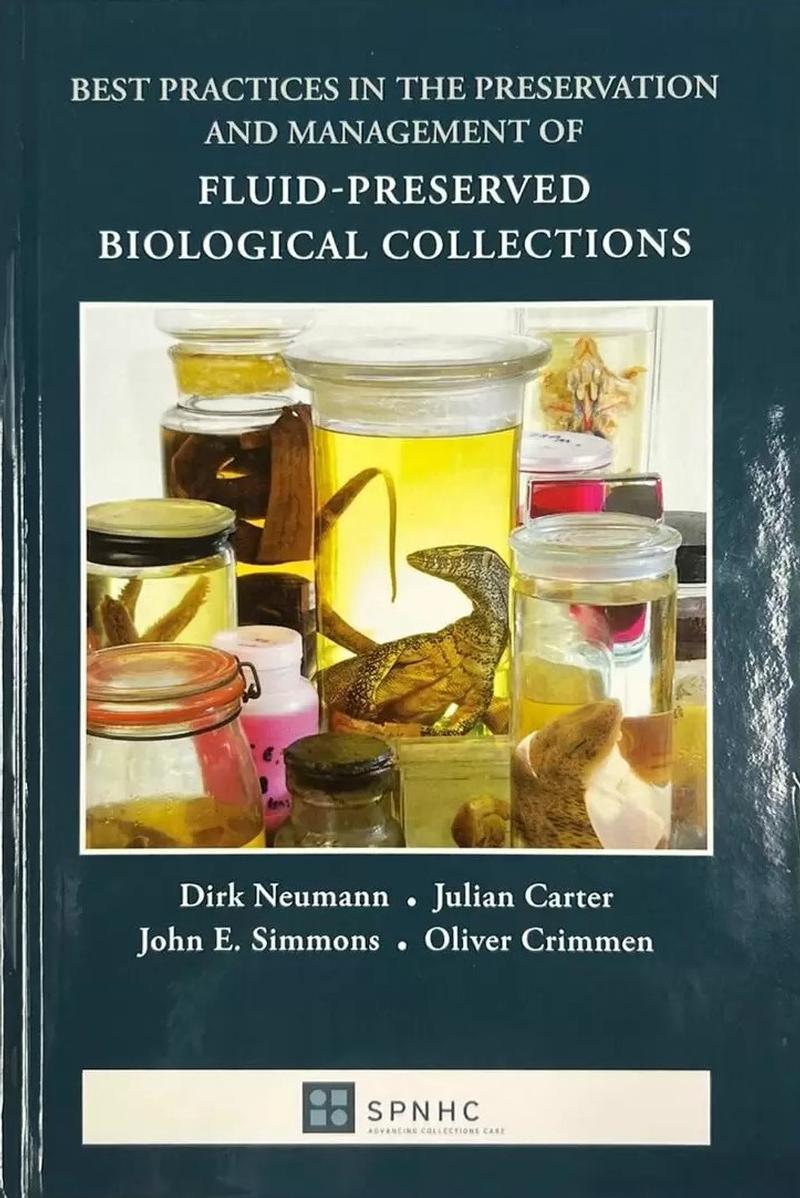Fluid-preserved specimens present unique and challenging preservation problems and a wide variety of chemicals have been used over the years to fix and preserve specimens. This book is based on the practical experience of experts from different fields engaged in the management and maintenance of fluid collections worldwide. It offers a specific perspective on the management of smaller and medium sized collections and their need to operate with limited resources, offering practical suggestions for care and maintenance.
Published by SPNHC (The Society for the Preservation of Natural History Collections)
Distributed in UK and Europe by Archetype Publications Ltd
Available in North America from University Products
Introduction and General Considerations
1.1 Collecting and uselful life of specimens
1.2 Materials used for storage
Best Practices and Definitions
2.1 Best practices and resommendations
2.2 Key definitions
Basic Conseideration When Collecting Speciments
3.1 Ethical considerations
3.2 Anaesthesia and euthansia
3.3. Fixation overview
3.4 transferring specimens from fixative to peservative
3.4.1 Staging Techniques
4.0 Fluid Storage
4.1. Fluid preservation
4.2 Typical Storage Fluids
Ethanol, Isopropyl alcohol, glycerol, formaldehyde, Other storage and holding fluids
4.3 Denaturants
4.4. Fluid storage of DNA and tissues for molecular analysis
5.0 Storage Environment
5.1 Relative Humidity
5.2 Climate control systems
air exchange rate, volatile pollutants
5.3 Temperature
for fluid preserved collection storage
for cooled and cold collection storage areas
5.4 Fire prevention and detection
5.5.Light and UV radiation
6.0 Storage, Maintenance and Conservation
6.1 Storage of Furniture
6.2 Specimen Containers
6.2.1 Quality of Storage containers..Glass, plastic
6.2.2 Matierials nort recommended for use in fluid collections
6.3 Lids and liners
phenolic resin (Bakelite) lids, Polyethylene closures, Polypropylene screw-on closures, metal lids,
clamp or bail closed jars with glass lids, glass stoppers, glass plate closures, polyethylene liners, PTFE or Teflon liners
6.4 Sealants
6.5 Collection monitoring, maintenance and conservation
6.5.1 Inspection of collections
6.5.2 Remedial maintenance and conservation
Topping iup, changing fluid preservatoves, rehydrating dried-out specimen material
Acknowledgements
References
Glossary
Index
